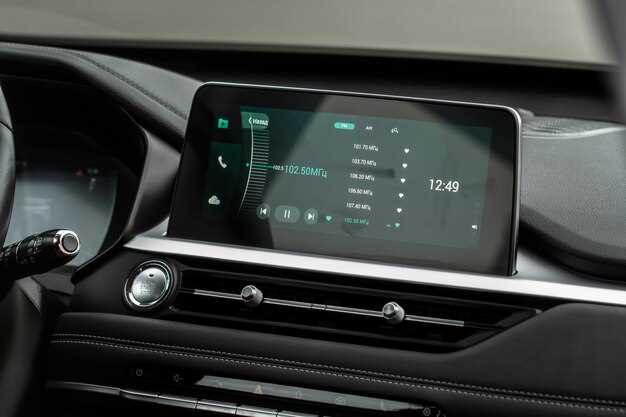
The evolution of automotive technology has significantly transformed the way drivers interact with their vehicles. One of the most notable advancements is the digital dashboard display, which serves as a central information hub. In Toyota vehicles, this cluster of digital interfaces not only enhances aesthetic appeal but also improves functionality and user experience.
Toyota’s commitment to innovation is evident in its digital dashboard, which offers a variety of features designed to keep drivers informed and engaged. From customizable layouts to real-time data visualization, the digital display provides critical information at a glance. This integration of technology ensures that essential driving metrics–such as speed, fuel efficiency, and navigation prompts–are readily accessible, allowing for a more seamless driving experience.
Moreover, the digital cluster goes beyond merely presenting data; it incorporates advanced connectivity options that sync with smartphones and other devices. This feature allows drivers to control entertainment systems, access navigation apps, and manage communication–all from the digital dashboard. As automotive design continues to evolve, Toyota’s innovative display remains a prime example of how technology can enhance safety, comfort, and overall driving satisfaction.
Customizing Your Digital Display Settings for Enhanced Visibility

The digital display cluster in your Toyota offers a range of customization options designed to enhance visibility and user experience. By adjusting various settings, drivers can ensure that vital information is easily accessible and readable, adapting the dashboard to different conditions and preferences.
One of the primary settings to customize is the brightness of the display. Many Toyota models come equipped with automatic brightness adjustment, which responds to external lighting conditions. However, manual control is also available, allowing drivers to increase brightness during daylight or reduce it at night to prevent glare. This adjustment can significantly affect visibility and reduce eye strain.
Another crucial aspect is the layout of the information shown on the digital cluster. Drivers can typically choose between various display modes–such as an emphasis on navigation data or fuel consumption metrics–depending on their driving needs. Selecting a layout that prioritizes the most relevant information can enhance overall safety by minimizing distractions while on the road.
Additionally, many Toyota digital displays allow for the adjustment of font sizes and color schemes. This customization is particularly beneficial for individuals with visual impairments or those who simply prefer higher contrast for easier reading. Drivers can experiment with different combinations to find a setting that maximizes clarity while ensuring all critical data remains visible at a glance.
Furthermore, alerts and notifications can often be tailored within the display settings. Customizing which alerts are shown–such as those for maintenance needs or fuel levels–can help drivers stay informed without feeling overwhelmed by unnecessary information. This selective display ultimately condenses the data presented and focuses attention where it is truly needed.
Finally, familiarizing yourself with the digital cluster’s features can lead to better utilization of its capabilities. Taking the time to explore settings in a safe environment allows for personal adjustments that enhance visibility tailored to specific preferences and driving scenarios. By optimizing the display settings, drivers can achieve a more intuitive and comfortable driving experience, ensuring that all necessary information is readily at hand.
Understanding the Navigation and Connectivity Features in the Cluster

The digital cluster in Toyota vehicles provides a sophisticated display that enhances the driving experience through its navigation and connectivity features. One of the key elements is the integration of GPS navigation, which offers real-time route guidance directly within the cluster. This feature allows drivers to view their current location, estimated time of arrival, and route adjustments without taking their eyes off the road.
Additionally, the cluster supports advanced connectivity options, allowing seamless integration with smartphones via Apple CarPlay and Android Auto. This connectivity enables drivers to access their favorite navigation apps, receive notifications, and make hands-free calls, all displayed within the cluster. Such functionality ensures that vital information is readily available without the need for additional screens.
The display also includes visual aids such as lane departure warnings and traffic sign recognition, enhancing situational awareness. By providing these features in the cluster, Toyota prioritizes driver safety and convenience, ensuring that navigation and connectivity enhance rather than distract from the driving experience.
Overall, the navigation and connectivity features within the Toyota cluster exemplify a commitment to innovative design, making essential travel information accessible while promoting a safer driving environment.
Troubleshooting Common Issues with Toyota’s Digital Dashboard
The digital dashboard in Toyota vehicles provides essential information, but like any technology, it can encounter issues. Understanding common problems can help resolve them efficiently.
One frequent issue is the display flickering or not turning on at all. This can often be traced back to a blown fuse or electrical connection problems. Check the fuse box for any blown fuses specifically linked to the dashboard display. If the fuses are intact, inspect the wiring for any loose connections or signs of wear that may interrupt the power supply.
Another concern is inaccurate readings on the digital display. If the speedometer or fuel gauge shows incorrect values, it could be due to faulty sensors. Diagnosing the issue may require a scan tool to read any error codes from the vehicle’s computer system, pinpointing the sensor needing replacement.
Sometimes, the display may lag or respond slowly to inputs. This is often a software issue. Ensure that the vehicle’s software is up to date by checking for any available updates at your local dealership or through the manufacturer’s website. A system reset could also alleviate temporary glitches.
Lastly, drivers may experience problems with connecting Bluetooth or smartphone features displayed on the dashboard. If the digital interface does not recognize devices, ensure that Bluetooth is enabled on both the vehicle and the device. Additionally, deleting previous connections and re-pairing the devices may resolve the issue.
By identifying these common problems and their solutions, Toyota owners can maintain optimal performance of their digital dashboard, ensuring accurate data and a smooth driving experience.




